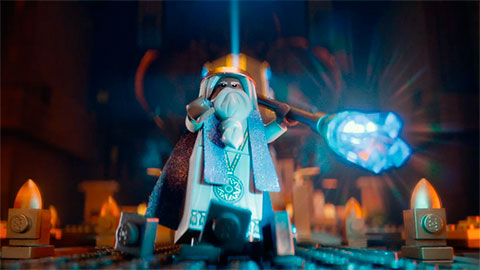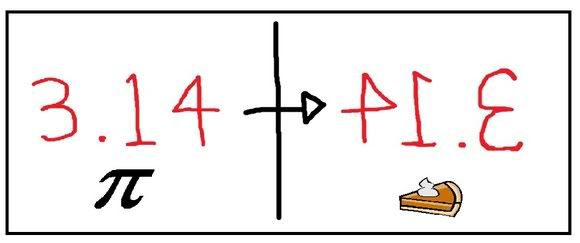Acceleration is a measurement of the change in velocity relative to the change in time. It is equal to the change in velocity divided by the change in time, so we can calculate that the acceleration of the broom is (67 m/s)/(10 sec) or 6.7m/s2. I looked at Amazon's shipping information to find out how much the average broom weighs. A typical broom weighs about 1 pound, or 0.5kg. Daniel Radcliffe (the actor who plays Harry Potter) has a listed mass of 53kg.
Since Force = Mass * Acceleration, we know that the amount of thrust produced by one Firebolt is equal to (6.7m/s2) * (53.5kg), or around 360 Newtons.
While this is an interesting factoid, knowing the amount of thrust that something produces doesn't really mean a whole lot without any context. I wanted to compare the thrust to the amount of thrust that other vehicles can create to really get a sense of how powerful these broomsticks are.
What I found would probably surprise no one. Cars, boats, planes, and rockets can all produce much more thrust than a broomstick. But a broomstick weighs so much less than these other objects! If we had the same mass of broomsticks as the mass of whatever is powering the craft, I'm sure the broomsticks would dominate! So let's look at that.
I wanted to look at the most extreme example I can find: the Saturn V Rocket.
Weighing in at a whopping 5 million pounds, this world heavy weight champion of spaceflight was used to fly the Apollo missions to the moon. This rocket used 2,160,000 kg of liquid oxygen and liquid hydrogen as rocket fuel and produced a thrust of 7.5 million pounds (or 3.4*107 Newtons). The first stage of the engine burned for 168 seconds, at which time the rocket was at an altitude of 67,000 meters and was moving 2,300 m/s.
OK, there are many different ways to compare the NASA model and the HP model. If we just straight up traded the mass of fuel for the mass of broomsticks, we would have around 4,320,000 broomsticks. At the rate of 360 Newtons/broomstick, this would create 1.6*109 Newtons of thrust, easily surpassing the liquid oxygen and hydrogen.
Or we could figure out how many brooms we would need to create the amount of thrust needed. We still have 360 Newtons/broom, so 3.4*107 Newtons requires 95,000 brooms. Cool!
Remember that brother that refused to play Harry Potter trivia that I talked about above? He's now a rocket scientist. He got his undergraduate and graduate degrees in Aerospace and Mechanical Engineering at the University of Michigan (Go Blue!) and now works as an engineer at Boeing, so I naturally tagged him in for this fight.
.jpg) |
| I'd recommend using a Fourier Transformation then finishing it off with a Suplex. |

 is the velocity of the exhaust,
is the velocity of the exhaust,  is the initial mass (both rocket and fuel),
is the initial mass (both rocket and fuel),  is the final mass, and
is the final mass, and  is the maximum change in velocity of the craft. Since we are using magic to power our rockets, there is no change in mass.
is the maximum change in velocity of the craft. Since we are using magic to power our rockets, there is no change in mass.This means that m/m above is equal to 1, and as we all know after looking at logarithmic functions, the logarithm of 1 is equal to 0. Therefore according to Tsiolkovsky, we cannot move.
My brother told me that since rockets are so aerodynamic and stable, we don't really need to worry about the drag force acting on the rocket. Rockets are specifically engineered to minimize the air resistance, which means that the drag force is significantly less than the amount of thrust produced by the rocket.
 |
| This is pretty much word for word how I asked my brother for help. |
ForceNet = ForceThrust - ForceGravity
mass*vesc/t = (360 Newtons/Broom)*(n brooms) - mg
(120,000+n/2 kg)(11,200 m/s)/(168 sec) = (360 N/broom)n - (120,000+n/2 kg)(9.81 m/s2)
33.3n + 8*103 = 360n - 4.9n - 1.2*106
322n = 1.208*106
n = 28,500 brooms
So it would take about 28,500 Firebolt broomsticks to fly the Saturn V rocket into outer space. This seems like a lot, but is it?
The Saturn V rocket uses about 90,000 kg of liquid hydrogen, 1,800,000 kg of liquid oxygen, and 700,000 kg of RP-1 (rocket propellant 1, similar to kerosene). This fuel costs around $800,000 today. Meanwhile, the Firebolt broomstick cost around 1000 galleons in the Harry Potter books in 1993. This converts to about $10,000 in 1993 or $16,500 in 2014. This means that the total cost of the brooms would be 28,500*$16,500, or about $470 million.
Unfortunately this method of space travel would not save us money until about our 590th trip into space. While it might start getting more cost effective if we started sending spaceships farther out into space, for the immediate future it would not save us money. I say we go for it even though it costs more. I think half a billion dollars is a fair price to kick the laws of nature in the face!
The Saturn V rocket uses about 90,000 kg of liquid hydrogen, 1,800,000 kg of liquid oxygen, and 700,000 kg of RP-1 (rocket propellant 1, similar to kerosene). This fuel costs around $800,000 today. Meanwhile, the Firebolt broomstick cost around 1000 galleons in the Harry Potter books in 1993. This converts to about $10,000 in 1993 or $16,500 in 2014. This means that the total cost of the brooms would be 28,500*$16,500, or about $470 million.
Unfortunately this method of space travel would not save us money until about our 590th trip into space. While it might start getting more cost effective if we started sending spaceships farther out into space, for the immediate future it would not save us money. I say we go for it even though it costs more. I think half a billion dollars is a fair price to kick the laws of nature in the face!






















